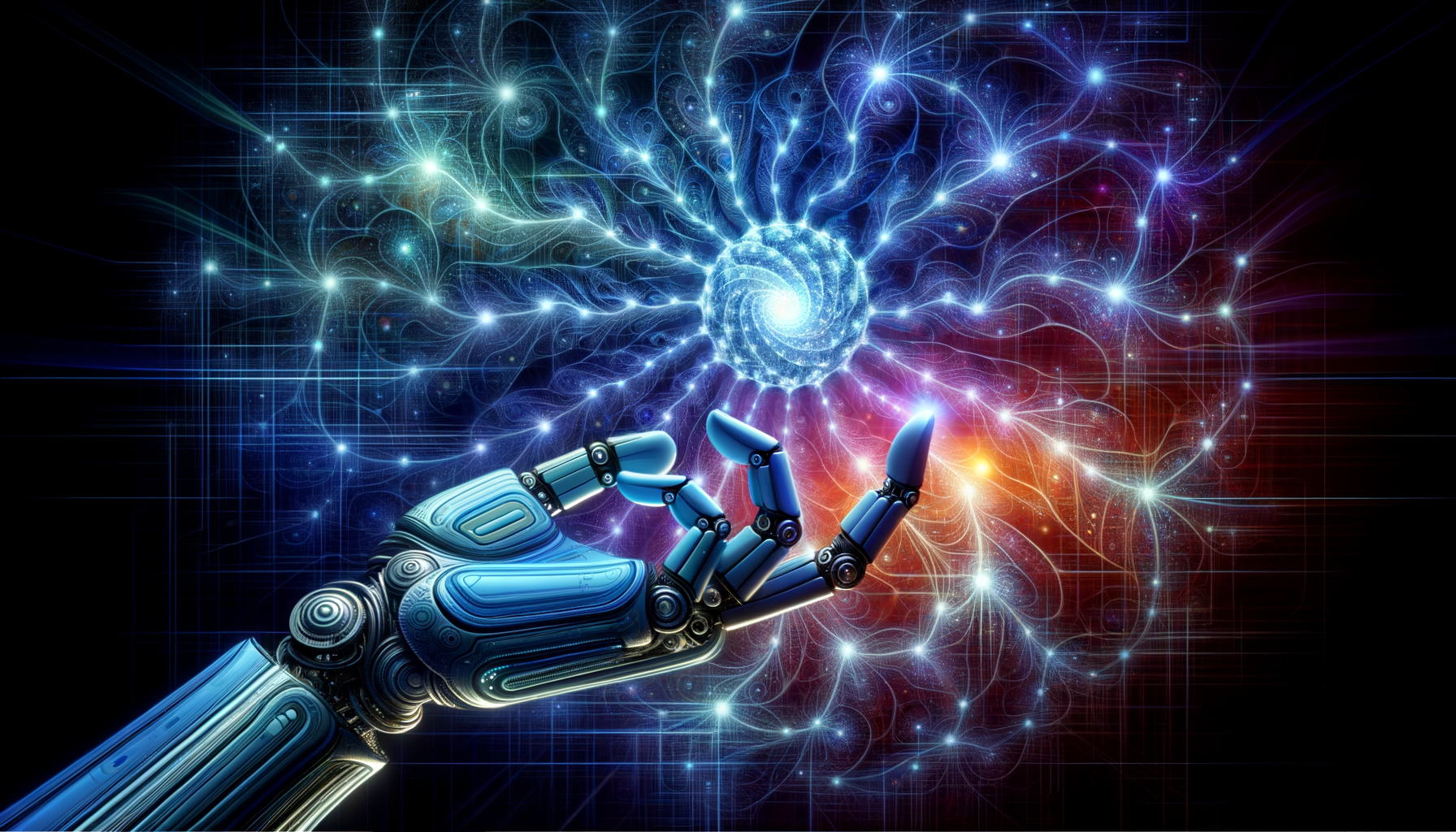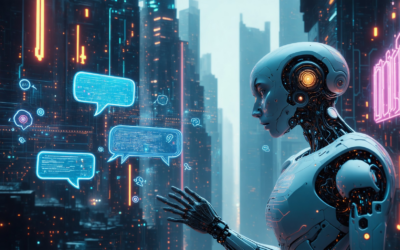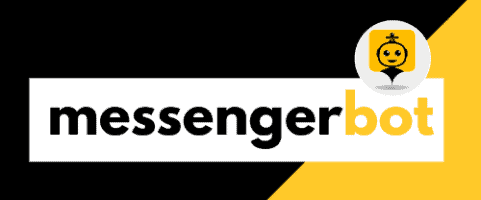In today’s fast-paced business landscape, providing exceptional customer service is paramount for success. As customer expectations continue to soar, companies are turning to AI-powered support bots to streamline interactions and deliver seamless experiences. These cutting-edge chatbots, or conversational AI assistants, are revolutionizing the way businesses engage with their customers, offering 24/7 availability, instant responses, and personalized support. From handling routine queries to resolving complex issues, support bots are proving to be invaluable assets in enhancing customer satisfaction while driving operational efficiency. In this comprehensive guide, we’ll explore the world of AI-powered support bots, their various types, the benefits of human-supported hybrid models, and the key features that make them indispensable for modern customer service strategies.
I. What are support bots?
Support bots, also known as chatbots or conversational AI, are computer programs designed to simulate human-like conversations and interactions. They leverage natural language processing (NLP) and machine learning algorithms to understand user queries, provide relevant information, and carry out specific tasks. At Messenger Bot, we’ve developed a cutting-edge platform that empowers businesses to harness the power of support bots across various digital channels, including websites, mobile apps, messaging platforms, and voice assistants.
A. Defining support bots and their purpose
The primary functions of support bots include:
- Customer Service and Support: Providing instant assistance, answering FAQs, troubleshooting issues, and guiding users through processes.
- Lead Generation and Sales: Engaging with potential customers, gathering information, and qualifying leads for sales teams.
- Information Retrieval: Acting as virtual assistants, retrieving data from knowledge bases, and delivering personalized information.
- Task Automation: Streamlining routine tasks, such as scheduling appointments, processing orders, or handling simple transactions.
Support bots can range from rule-based systems with predefined responses to advanced AI-powered models that continuously learn and adapt through machine learning and natural language understanding (NLU) techniques. They aim to deliver efficient, personalized, and consistent support experiences, reducing response times and minimizing human intervention for routine queries (Accenture, 2020). As AI and NLP technologies advance, support bots are becoming increasingly sophisticated, enabling more natural and contextual conversations (IBM, 2022).
B. Types of support bots (customer service, IT, etc.)
Support bots can be tailored to various industries and use cases, such as:
- Customer Service Bots: Designed to assist customers with inquiries, troubleshooting, and support-related tasks across multiple channels like websites, mobile apps, and messaging platforms. Examples include Brain Pod AI’s Multilingual AI Chat Assistant and Intercom’s Live Chat.
- IT Support Bots: Focused on resolving technical issues, providing guidance on software and hardware-related problems, and automating routine IT tasks. Examples include IBM Watson Assistant and xMatters IT Service Management.
- HR and Employee Support Bots: Designed to assist employees with HR-related inquiries, such as benefits, policies, and training, as well as onboarding and offboarding processes. Examples include Talkpush and HireMor.
- Banking and Financial Bots: Focused on providing personalized financial advice, account management, and transaction assistance. Examples include Bank of America’s Virtual Assistant and Capital One’s Eno.
By tailoring support bots to specific industries and use cases, businesses can deliver more personalized and efficient assistance, streamlining operations and enhancing the overall customer experience.

What are human-supported bots?
A. Hybrid approach: AI and human agents
Human-supported bots, also known as hybrid bots or AI-assisted bots, are conversational AI systems that combine the capabilities of natural language processing (NLP) and machine learning algorithms with human oversight and intervention. These AI chatbots leverage artificial intelligence to engage in automated conversations, understand user intent, and provide relevant responses. However, when faced with complex queries or situations beyond their training scope, they seamlessly escalate the interaction to human agents for further assistance.
B. Benefits of human-supported bots
The key benefits of human-supported bots include:
- Intelligent Automation: They utilize NLP and machine learning to interpret user inputs, identify intents, and provide automated responses for common queries and tasks, improving efficiency and scalability.
- Human Intervention: When the bot encounters ambiguity, complex scenarios, or requests beyond its capabilities, it escalates the conversation to a human agent or subject matter expert for resolution.
- Continuous Learning: Through ongoing interactions and human feedback, these AI chatbots continuously improve their knowledge base, enabling them to handle more complex queries over time.
- Omnichannel Support: Human-supported bots can operate across various channels, such as websites, mobile apps, messaging platforms, and voice assistants, providing consistent and personalized experiences.
- Contextual Understanding: By leveraging natural language understanding (NLU) and contextual awareness, these bots can comprehend user inputs in their proper context, leading to more natural and relevant responses.
Human-supported bots offer several benefits, including improved customer satisfaction, increased operational efficiency, and enhanced agent productivity. They enable businesses to handle high volumes of routine inquiries automatically while ensuring complex issues are addressed by human experts, striking a balance between automation and human touch.
Sources:
- What Are Hybrid Chatbots and How Do They Work? by IBM Cloud Education
- The Rise of Human-Assisted AI in Customer Service by Zendesk
- Understanding Human-Supported AI Chatbots by Oracle
What is a Support Chatbot?
A. Chatbots for Customer Support
A support chatbot, also known as a customer service chatbot, is a software application that leverages artificial intelligence (AI) and natural language processing (NLP) to simulate human-like conversations. It enables businesses to automate customer interactions, handle inquiries, and provide support through digital messaging channels like websites, mobile apps, and messaging platforms.
Support chatbots are designed to understand and respond to customer queries in a conversational manner, reducing the need for human intervention in routine tasks. They can handle various customer service functions, such as answering frequently asked questions (FAQs) about products, services, policies, or account information, providing guidance on troubleshooting and resolving technical issues, assisting with order tracking, order placement, and returns/exchanges, scheduling appointments, making reservations, or processing payments, and collecting customer feedback and conducting surveys.
Effective support chatbots are trained on large datasets of customer interactions, enabling them to recognize and respond to a wide range of queries accurately. They can be integrated with knowledge bases, customer relationship management (CRM) systems, and other business applications to access relevant information and provide personalized responses.
According to a study by Gartner, by 2022, 70% of customer interactions will involve emerging technologies like machine learning applications, chatbots, and mobile messaging, up from 15% in 2018. Additionally, research by IBM indicates that businesses that use chatbots can achieve cost savings of up to 30% in customer service operations.
B. Key Features of Support Chatbots
Support chatbots offer several key features and benefits, including:
- 24/7 Availability: Chatbots can provide round-the-clock support, ensuring customers can get assistance whenever they need it, without being limited by business hours or staff availability.
- Consistent Service Quality: Unlike human agents, chatbots deliver consistent and standardized responses, minimizing the risk of inconsistent or inaccurate information.
- Faster Response Times: Chatbots can respond to customer inquiries almost instantly, reducing wait times and improving customer satisfaction.
- Multilingual Support: Many chatbot platforms like Brain Pod AI offer multilingual capabilities, enabling businesses to provide support in various languages, breaking down language barriers.
- Scalability: Chatbots can handle multiple inquiries simultaneously, making them highly scalable and able to support businesses with large customer bases.
- Cost Savings: Implementing chatbots can significantly reduce customer service costs by automating routine tasks and minimizing the need for human agents.
- Integration with Business Systems: Chatbots can be integrated with CRM systems, knowledge bases, and other business applications, ensuring access to up-to-date information and streamlining operations.
However, it’s essential to strike a balance between automation and human interaction, as complex or sensitive issues may still require human agents’ expertise and empathy. Many businesses adopt a hybrid approach, where chatbots handle routine queries, and human agents step in for more complex or sensitive matters, providing a seamless and personalized customer experience.
IV. How to Make a Support Bot?
A. Chatbot Development Platforms
Creating a support bot involves leveraging chatbot development platforms designed to streamline the process. These platforms provide user-friendly interfaces and tools to build, train, and deploy conversational AI assistants tailored to your business needs. Some popular options include:
Dialogflow (by Google), Amazon Lex, IBM Watson Assistant, and Brain Pod AI‘s multilingual chat assistant platform. These platforms offer pre-built natural language processing (NLP) models, integration with various channels (websites, messaging apps, etc.), and tools for training your chatbot on custom intents and entities.
B. Integrating with Customer Service Tools
To create a comprehensive support experience, integrating your chatbot with existing customer service tools is crucial. This integration enables seamless data exchange, enhancing the chatbot’s functionality and knowledge base. For instance, you can connect your chatbot to your customer relationship management (CRM) system, allowing it to access customer data and provide personalized support.
Similarly, integrating with knowledge base platforms equips your chatbot with access to extensive information repositories, enabling it to provide accurate and up-to-date responses to customer queries. Popular customer service tools like Zendesk, Salesforce Service Cloud, and Intercom offer robust integration capabilities, allowing you to embed your chatbot directly into their platforms for a unified support experience.
When creating a support bot, following a structured approach is essential. Here are the key steps involved:
- Define the chatbot’s purpose and use case (e.g., customer service, lead generation, information dissemination).
- Choose the deployment platform (website, messaging apps, social media, etc.) based on your target audience’s preferences.
- Select a chatbot development platform that aligns with your requirements (e.g., Dialogflow, Amazon Lex, Brain Pod AI).
- Design conversational flows and train the chatbot using the platform’s tools and integrating external data sources as needed.
- Implement natural language processing (NLP) and machine learning (ML) models for intent recognition and entity extraction.
- Integrate the chatbot with backend systems (e.g., CRM, knowledge base) for data exchange and functionality enhancement.
- Thoroughly test the chatbot across various scenarios and devices, gathering user feedback for iterative improvements.
- Deploy the chatbot and monitor its performance, continuously updating the training data and refining the conversational logic.
- Promote the chatbot through appropriate channels (website, social media, etc.) and provide clear instructions for users.
- Analyze chatbot metrics (e.g., engagement rate, resolution rate) and optimize based on insights from user interactions.
By following these steps and leveraging the right tools and platforms, you can create a powerful support bot that enhances customer satisfaction, reduces support costs, and improves overall operational efficiency.

V. Why are bots illegal?
A. Legality of bots and their usage
While AI chatbots and support bots offer numerous benefits for businesses, it’s crucial to understand that their usage is not always legal. Bots can be considered illegal when they are employed for malicious purposes or violate the terms of service of websites and platforms. Some common scenarios where bots are deemed illegal include:
- Scraping and data theft: Bots that scrape data from websites without permission can violate copyright laws and terms of service agreements. This includes harvesting personal information, pricing data, or other proprietary content.
- Distributed Denial of Service (DDoS) attacks: Botnets, networks of compromised devices controlled by malicious actors, can launch DDoS attacks that overwhelm servers and websites with traffic, causing service disruptions.
- Fraud and abuse: Bots can be used for fraudulent activities like account creation, ticket scalping, fake social media engagement, and click fraud, which can result in financial losses for businesses and individuals.
- Spamming and spreading malware: Malicious bots can be used to send spam emails, post spam comments, or distribute malware, viruses, and other malicious software.
- Violating terms of service: Many websites and online services explicitly prohibit the use of bots in their terms of service agreements, and using bots on these platforms can result in account suspensions or legal action.
- Unfair competition: Bots can provide an unfair advantage in online activities like gaming, e-commerce, and ticket sales, violating fair competition laws and regulations.
It’s important to note that not all bots are illegal. Many legitimate bots are used for beneficial purposes, such as web crawlers for search engines, chatbots for customer service, and automated testing tools. However, using bots for malicious or unauthorized activities can lead to legal consequences, including fines, account terminations, and even criminal charges in severe cases.
B. Ethical considerations for support bots
Beyond legal considerations, the usage of support bots and AI chatbots also raises ethical concerns. As these technologies become more advanced and integrated into various industries, it’s essential to ensure they are developed and deployed responsibly. Some ethical considerations include:
- Privacy and data protection: Bots often handle sensitive customer data, and it’s crucial to implement robust security measures to protect user privacy and prevent data breaches.
- Transparency and disclosure: Customers should be aware that they are interacting with a bot and not a human agent, to avoid any deception or misunderstanding.
- Bias and fairness: AI systems can inadvertently perpetuate biases present in their training data, leading to unfair or discriminatory outcomes. Developers must strive to mitigate these biases and ensure fair treatment for all users.
- Accountability and oversight: Clear guidelines and oversight mechanisms should be in place to hold developers and deployers of bots accountable for any unintended consequences or misuse.
- Human oversight and fallback: While bots can handle routine tasks efficiently, complex or sensitive issues should have a human fallback option to ensure appropriate handling.
By addressing these ethical considerations and prioritizing responsible development and deployment practices, businesses can leverage the power of support bots and AI chatbots while mitigating potential risks and fostering trust with their customers.
VI. How can you tell if someone is using bots?
A. Detecting bot activity
There are several indicators that can help identify if someone is using bots or automated programs online:
- High activity levels: Bots can perform tasks at a much faster rate than humans, so unusually high activity or engagement levels can be a red flag.
- Repetitive behavior: Bots often exhibit repetitive patterns in their actions, such as posting identical or very similar content across multiple platforms or accounts.
- Lack of human-like interactions: Bots may struggle with natural language processing and human-like interactions, resulting in robotic or nonsensical responses.
- Suspicious account details: As mentioned, bots often lack realistic profile pictures, bios, or other personal details commonly found in human accounts.
- Coordinated activities: If multiple accounts exhibit similar behavior patterns or engage in coordinated activities, it could indicate the presence of a bot network.
- IP address analysis: Bots may originate from data centers or IP addresses associated with known bot networks or suspicious locations.
- Browser fingerprinting: Bots may lack the unique browser fingerprints that human users possess, such as specific browser configurations, plugins, or user agent strings.
- Captcha tests: Implementing CAPTCHA challenges can help filter out bots, as they struggle with tasks that require human cognitive abilities.
To effectively detect and mitigate bot activities, a combination of technical measures (IP analysis, browser fingerprinting, CAPTCHAs) and behavioral analysis (activity patterns, interactions, account details) is often employed. Additionally, consulting reputable sources like the NIST’s “Botnet Detection and Response” guide and research papers from Brain Pod AI and other cybersecurity firms can provide more in-depth insights into bot detection strategies.
B. Bot vs. human behavior
Distinguishing between bot and human behavior is crucial for maintaining the integrity of online platforms and ensuring a positive user experience. While bots can be programmed to mimic human behavior to some extent, there are still several key differences:
- Natural language: Humans have a much more nuanced and contextual understanding of natural language, making their interactions more dynamic and adaptable. Bots often struggle with interpreting complex language, idioms, and subtle nuances.
- Emotional intelligence: Humans possess emotional intelligence and can express and interpret emotions, whereas bots typically lack this ability, resulting in more robotic and emotionally flat interactions.
- Contextual awareness: Humans have a better understanding of context and can adjust their behavior accordingly. Bots may struggle with adapting to changing contexts or unexpected situations.
- Creativity and originality: Humans are capable of generating truly original and creative content, ideas, and solutions. Bots, on the other hand, are limited by their programming and training data, making it difficult for them to be truly creative or innovative.
- Inconsistencies and variations: Human behavior often exhibits natural inconsistencies and variations, reflecting our unique personalities and thought processes. Bots, however, tend to be more consistent and predictable in their behavior, which can be a giveaway.
By analyzing these behavioral differences, along with technical indicators like those mentioned earlier, organizations can develop robust strategies to differentiate between bot and human activities. This not only helps protect against malicious bot attacks but also ensures a more authentic and engaging online experience for human users.
It’s worth noting that as AI technology continues to advance, the line between bot and human behavior may become increasingly blurred. However, by staying up-to-date with the latest developments and employing a combination of technical and behavioral analysis techniques, it is possible to maintain a high level of bot detection accuracy.
VII. Benefits of Support Bots
A. Improved Customer Experience
One of the primary advantages of support bots is their ability to enhance the customer experience. AI chatbots and conversational AI assistants like Brain Pod AI provide instant responses to customer queries, ensuring they receive timely assistance without the frustration of long wait times. These support bots can handle multiple conversations simultaneously, eliminating the need for customers to wait in queues.
Moreover, support bots can operate around the clock, providing 24/7 availability, which is particularly valuable for businesses with a global customer base. Customers can access assistance at any time, regardless of time zones or business hours, leading to increased satisfaction and loyalty.
Another key benefit is consistency in customer interactions. AI-powered customer service bots deliver standardized responses based on predefined scripts or knowledge bases, ensuring that all customers receive accurate and consistent information. This consistency helps to maintain a professional brand image and fosters trust among customers.
B. Cost and Efficiency Gains
Implementing support bots can lead to significant cost savings for businesses. By automating routine tasks and handling a substantial portion of customer inquiries, support bots reduce the need for human agents, resulting in lower labor costs. Additionally, online bots can operate 24/7 without incurring overtime or additional expenses, further contributing to cost-effectiveness.
Support bots also improve operational efficiency by streamlining processes and reducing response times. AI chatbots can quickly retrieve information from knowledge bases, process customer requests, and provide instant resolutions, minimizing the need for manual intervention. This enhanced efficiency translates into faster resolution times and improved productivity for support teams.
Furthermore, support bots can gather valuable customer data and insights, enabling businesses to identify pain points, analyze trends, and make data-driven decisions to enhance their products, services, and overall customer experience.





